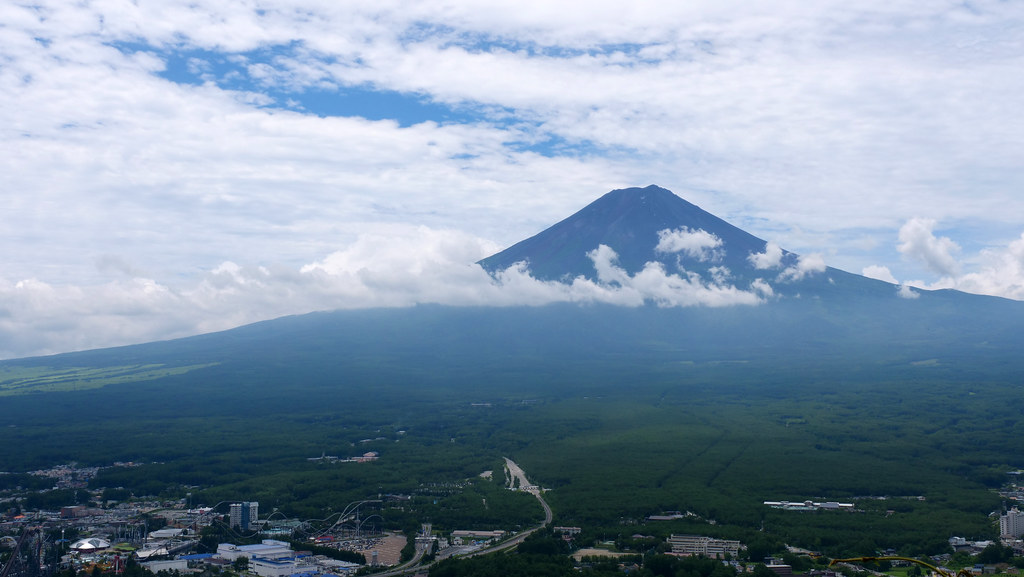Shizuoka Prefecture is located in the Chubu region, specifically in the Tokai area of Japan. Known for its rich natural beauty symbolized by Mount Fuji and Suruga Bay, the prefecture is also blessed with a well-developed industrial and agricultural sector, as well as abundant tourism resources. The capital is Shizuoka City, and the prefecture features a variety of distinctive cities, with Shizuoka City and Hamamatsu City serving as major government-designated cities.
Geography and Terrain
Shizuoka Prefecture stretches about 155 kilometers from east to west. The region boasts a varied landscape, bordered by the Southern Alps to the north and Suruga Bay and Enshu-nada Sea to the south. Approximately 60% of the prefecture's land area is forested, with the population concentrated in limited flatlands. The prefecture encompasses a diverse range of natural features, including the Izu Peninsula, Lake Hamana, and the Makinohara Plateau, offering mountains, oceans, rivers, and lakes all in one place.
-
Eastern region: Includes the Izu Peninsula, Mount Fuji, Mishima, and Numazu, with strong connections to the Tokyo metropolitan area.
-
Central region: Centered around Shizuoka City, the coastal plains along Suruga Bay are well-developed.
-
Western region: Includes Hamamatsu City and Kosai City, with strong economic ties to the Chukyo (Nagoya) region.
Shizuoka is sometimes described as being shaped like a goldfish, with the western part forming the head and the Izu Peninsula forming the tail.
Climate Characteristics
Overall, Shizuoka Prefecture falls under the warm and humid Pacific climate, but its varied terrain creates notable regional differences.
-
Coastal and flatland areas are warm, especially the Izu region, which rarely sees snowfall and has a subtropical feel.
-
In contrast, the northern mountainous regions (along the Akaishi Mountains) and inland eastern areas like Gotemba experience a climate similar to the Central Highland type, with cold winters and frequent snowfall.
-
The summit area of Mount Fuji remains cold throughout the year and belongs to the tundra climate (polar climate) due to the high elevation.
While extreme heat is often observed in inland western areas like Tenryu during summer, the Izu Peninsula tends to be relatively cool. Shizuoka is also one of the Japanese prefectures more prone to typhoon landfalls.
Industry and Economy
Shizuoka has a balanced economic structure, with thriving manufacturing and agricultural/fisheries sectors.
-
Industry: One of Japan’s top prefectures in terms of total shipment value of manufactured goods. Hamamatsu is the birthplace and home base of Honda, Suzuki, Yamaha, and others, making it globally recognized for motorcycles, musical instruments, optical equipment, and plastic models.
-
Agriculture: Known for specialties like Shizuoka green tea, mandarins, wasabi, and strawberries.
-
Fisheries: Yaizu Port boasts the highest catch value in Japan, with skipjack tuna and bonito flakes being key products.
In recent years, the prefecture has been promoting the sixth-sector industrialization, combining primary industries with processing and sales.
Cities and Population
Shizuoka Prefecture includes two government-designated cities: Shizuoka and Hamamatsu. It also has many other cities with populations over 100,000, such as Numazu and Fuji. Unlike other regions, the population is not concentrated in a single major city but is evenly distributed across multiple cities along the Tokaido corridor.
As a result, the prefecture as a whole forms one of Japan's significant metropolitan areas, known as the Shizuoka-Hamamatsu urban region.
Tourism and Culture
With abundant natural scenery, historical sites, and hot spring resorts, Shizuoka is a major tourist destination, drawing approximately 150 million visitors annually.
-
World Heritage Sites: Mount Fuji, Fujisan Hongu Sengen Taisha Shrine, Miho no Matsubara, Nirayama Reverberatory Furnace
-
Nature & Hot Springs: Izu Peninsula Geopark, Atami Onsen, Izu Kogen, Lake Hamana, Sumatakyo Gorge
-
Cultural Sites & Attractions: Mishima Taisha Shrine, Kunozan Toshogu Shrine, Toro Ruins, Oigawa Railway
There are also many places where visitors can experience Japanese culture firsthand, such as historical sites along the Tokaido, spots related to Mount Fuji worship, and locations associated with Tokugawa Ieyasu.
Summary
Shizuoka Prefecture is a harmonious blend of nature represented by Mount Fuji and Suruga Bay, balanced industrial and agricultural sectors, and a variety of urban and tourist areas. With excellent access to both the Tokyo and Nagoya metropolitan areas, its central location in Japan and the diverse appeal of each region make it a vibrant yet serene place to visit or live.











